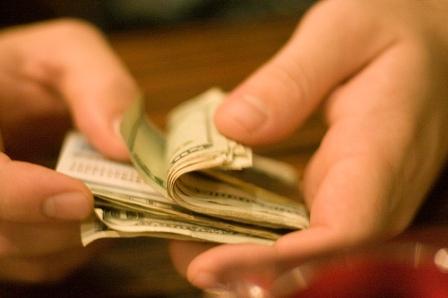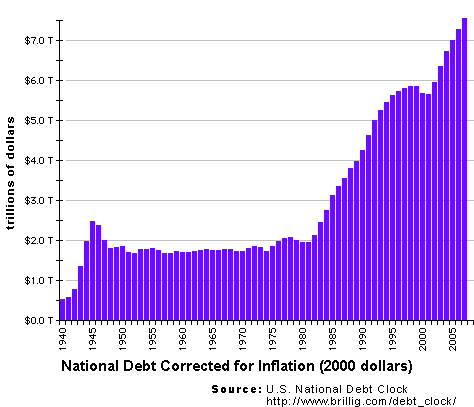As the secret war between US and Iran continues with killings of Iranian scientists here is a good analysis in this article of real reasons behind US-Iran war (US dollar as reserve oil currency aka Petrodollars), and the Iraq and Libya wars too. And potential consequences as US dollar world domination ends leading to hyper-inflation in USA.
As tensions between the US and Iran heat up, author Michael T. Winter believes the main reason behind America’s harsh stance is Tehran’s move to seek an alternative to the dollar as an oil currency.
Economic sanctions, spearheaded by the US and, less willingly, the EU could have a disastrous effect on both of their respective economies. If Iran cannot sell their oil to Europe, there are plenty of customers waiting in the wings, and if they come bearing not petrodollars, but gold and sovereign currencies, then all the better for Iran. These sanctions, if enforced, will in effect place a serious dent in the power of the petrodollar.
Any rhetoric regarding Iran’s nuclear program and the insistence on crippling it is nothing more than a US attempt to force regime change for one more receptive to maintaining the hegemony of the petrodollar.
The world now knows the truth about the US and how they conduct their affairs. US hostilities toward Iran have nothing to do with nuclear weapons development. If that were the case, then North Korea and Pakistan would be facing similar sanctions and threats, but they aren’t. The difference of course is in what lies beneath the ground – oil. Iran has it and the other guys don’t.
At the heart of the issue is not Iran’s dubious attempt to build nuclear weapons, or even oil, but how that oil is paid for. In 1973, Richard Nixon promised King Faisal of Saudi Arabia that the US would protect Saudi Arabian oilfields from any and all interested parties seeking to forcefully wrest them from the House of Saud. It’s important to remember that in 1973, Saudi Arabia didn’t have a fraction of the military and ground forces it possesses today (almost exclusively US manufactured weapons) and the USSR was very much a threat.
In return Saudi Arabia, and by extension OPEC, agreed to sell their oil in US dollars only. As if that weren’t sweet enough, as part of the deal, they were required to invest their profits in US treasuries, bonds and bills. The real zinger is that all countries purchasing oil from OPEC had to do so in US dollars, or ‘petrodollars’.
This strengthened the US dollar, resulting in a steady US economic growth cycle throughout the 80’s and 90’s. Countries purchasing OPEC oil started buying US treasury bills, bonds and securities to ensure they could continue purchasing OPEC oil. This worked fine for the US until 2001.
No plan, however well formulated, functions smoothly indefinitely.
2001, enter Saddam Hussein. He floated a plan to sell oil for European currencies in lieu of petrodollars. Shortly after Iraq was ‘suddenly’ found to be seeking and stockpiling weapons of mass destruction – allegations spearheaded by the US. The world knows what happened, suffice it to say that Saddam is dead and Iraq is ‘back on track’, selling its oil for petrodollars once again.
Muammar Gaddafi harbored the Lockerbie Bombers and allowed various terrorist organizations establish training camps in Libya. He tried to buy a nuke from China in 1972. In 1977, he approached Pakistan, then India. He sought nerve gas from Thailand. In spite of well over fifty failed assassination attempts on Gaddafi by Israel, the US and the UK, Libya was left to its own devices for the most part. Seeking nukes and harboring terrorists is one thing, but threatening the petrodollar is quite another. Gaddafi made a fatal error when he decided to move away from the petrodollar in favor of other currencies. This simply was not tolerated by the US. Having already played the WMD card in Iraq, something new was pulled from the US ‘regime change’ grab bag. Within a year, ‘internal’ elements rose up in rebellion against Gaddafi and now he is dead. Long live the petrodollar.
Dominique Strauss-Kahn, former head of the International Monetary Fund (IMF), suggested last year that the Euro would be a more suitable oil reserve currency than the US Dollar. Within three months of that statement, allegations of rape ruined his career, derailing his bid for the French Presidency in the process. Soon thereafter, all charges were dropped, but of course, le dommage était fait – the damage was done. Christine Lagarde, DSK’s replacement as head of the IMF sees no reason to change the current arrangement, naturellement.
The Iran situation is a little trickier. The US has sought to dismantle Iran’s regime ever since the 1979 Iranian Revolution, so this round of hostilities, while not new, reflects a new level of intensity. Why, after thirty years of hostility, has the US ratcheted up its rhetoric? As Obama stated in his recent State of the Union address, when it comes to Iran and the insistence they dismantle their nuclear program, “no options are off the table”. By stating ‘no options’ this would include nuclear deployment as a deterrent.
The answer of course is that Iran is now seeking to disengage itself from the petrodollar dynamic. In 2005, Iran sought to create an Iranian Oil Exchange, thus bypassing the US controlled petrodollar. Fear that western powers would freeze accounts in European and London banks put an end to that plan.
But that was not the end of their attempts, and Iran sought other ways to get around the petrodollar noose. There are rumors that India, which imports 12% of their oil from Iran, has agreed to purchase oil for gold. Energy trade with China, importing 15% of its oil and natural gas from Iran may be settled in gold, yuan, and rial. South Korea plans to buy 10% of their oil from Iran in 2012, and unless Seoul sides with American and European sanctions, it is likely to use gold or their sovereign currency to pay for it. Also, Iran is already dumping the dollar in its trade with Russia in favor of rials and rubles.
Iran is breaking the back of the petrodollar. Others have tried, but Iran is succeeding. To understand how disastrous this is for the US, one must have a basic understanding of how critical a role the petrodollar plays in the economic health of the US.
Through King Faisal, Nixon elevated the US to supreme economic ascendency, not unlike Damocles in his desire to rule. Sitting on the (economic) throne of the world is great, but Nixon was either unaware of the sword dangling over the US economic system, or chose to ignore it in favor of reaping the rewards of the moment.
By creating the petrodollar paradigm, the US economy soared, as all countries of the world were required to amass US currency to purchase oil from OPEC nations. Sales of T-bills, securities and US bonds soared. US coffers fattened. With the US dollar as the world’s oil currency reserve, economic fortune favored the US. But with great reward comes great risk. While other countries exchanged their currency for the dollar, (forfeiting value in the process) the US simply printed more money to match their needs and purchase their oil – essentially for free. The best example is that while gasoline in the US cost $3.00 per gallon, in Europe that same gallon costs $6.00 or more.
Herein lies the danger. If Iran is successful in its bid to set up their own bourse, or oil exchange, then what need does the world have for all those US dollars? The answer is none at all. As Iran creating gold and sovereign currency partnerships with India, China, South Korea and Russia, the hegemony of the petrodollar will be destroyed.
The resulting sell-off of US dollars, T-bills, securities, bonds and assets will flood the already swollen world economy with even more useless dollars, ultimately devaluing it into a position where hyper-inflation becomes a risk.
So, while the US government sabre-rattles and prattles on and on about nuclear weapons and the threat Iran poses to the Middle East, the thin veneer of lies spouted by the elite controlled media is being stripped away, revealing the truth of their warmongering rhetoric.
The US, by their foolish insistence on enforcing embargoes and sanctions against Iran, is hastening the end of the petrodollar and ushering in the age of US dollar hyper-inflation. A practical example: One loaf of bread in a healthy economy is $1.00. In an inflationary economy it’s $1.75. In a hyper-inflationary economy, $500.00.
Bullies may be large and dangerous, but rarely are they intelligent.
Damocles wisely vacated the throne of Dionysius before the sword fell upon his head, but the US is foolishly refusing to step down from their economic dais in spite of the catastrophic effect current policy direction will mean for US citizens and the world economy.
Michael T. Winter
The statements, views and opinions expressed in this article are solely those of the author and do not necessarily represent those of RT.
This entry was posted on February 2, 2012 at 7:34 PM and has received 736 views. There are currently 0 comments.
Print this entry.

 According to the New York Times, the U.S. government is “shredding and burying” billions of dollars in landfills… enough to fill 1,750 dump trucks each year. This shredding program has been going on for years, to rid the system of worn out dollar bills.
According to the New York Times, the U.S. government is “shredding and burying” billions of dollars in landfills… enough to fill 1,750 dump trucks each year. This shredding program has been going on for years, to rid the system of worn out dollar bills.
 Having just sorted though my closets and given away or sold about 24 large bags of clothes that I wasn't wearing or didn't love (or didn't fit) I realized that like many people I buy clothes that I don't wear. Here are some questions from Carol Tuttle article (full article and video at link below) to ask yourself in the dressing room when you are deciding whether to buy that item.
Having just sorted though my closets and given away or sold about 24 large bags of clothes that I wasn't wearing or didn't love (or didn't fit) I realized that like many people I buy clothes that I don't wear. Here are some questions from Carol Tuttle article (full article and video at link below) to ask yourself in the dressing room when you are deciding whether to buy that item.